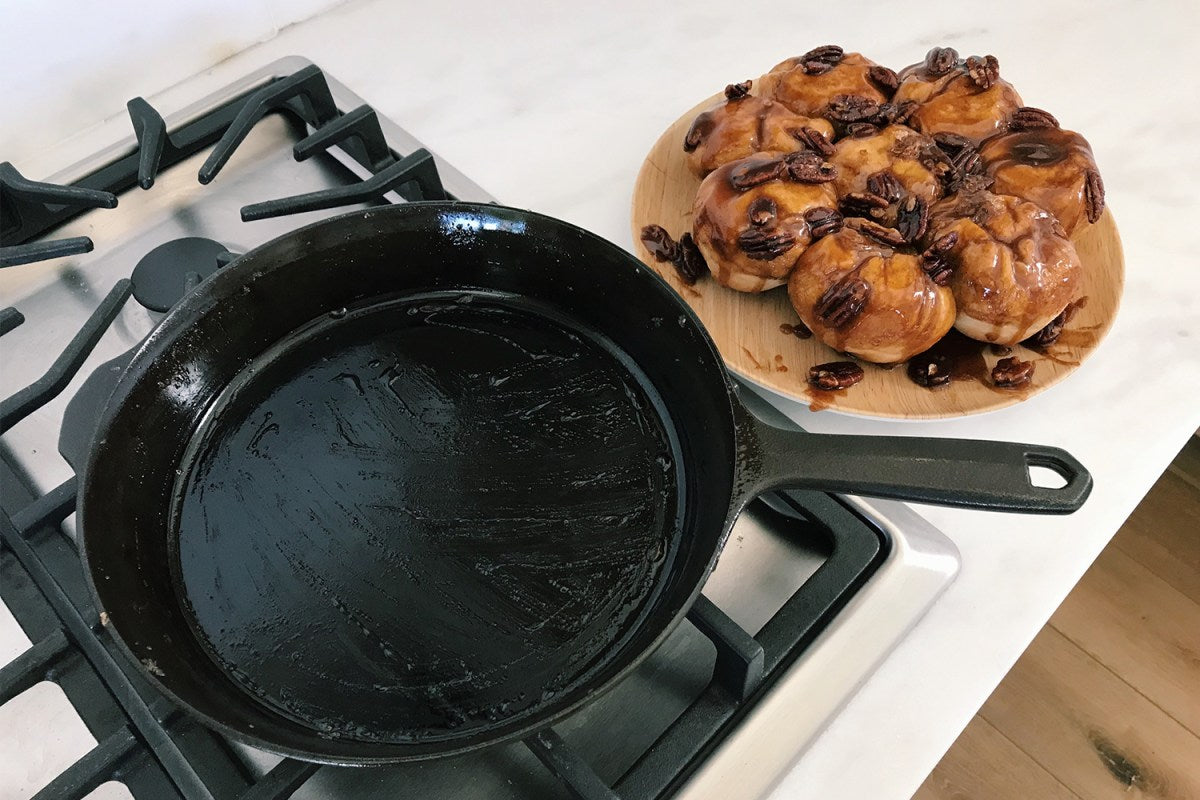If you're a kitchen professional, you might find yourself puzzled by the question why does my cast iron have spots after seasoning? Cast iron cookware is revered for its durability and ability to retain heat, but spotting can often cause unnecessary concern. This article aims to uncover the mysteries that lie behind these pesky spots and assists in guiding your seasoning practices, ensuring your cast iron remains a beloved staple in your culinary toolkit.
For those who appreciate high-quality cookware, understanding how to maintain and season your cast iron is crucial. Cast iron skillets and pans, when seasoned properly, can provide a naturally non-stick surface, making cooking a delightful experience. However, spotting can detract from the aesthetic and functioning of your cookware, leading you to question your seasoning techniques. Lets embark on this culinary journey to decipher this common issue.

Understanding Seasoning and Its Importance
Seasoning is not merely a cooking technique; it's a fundamental aspect of caring for your cast iron. It's essential to know the role that seasoning plays in creating that coveted non-stick surface. When you clean your cast iron, you're preparing the canvas for seasoning. But lets first discuss what seasoning actually entails.
Seasoning involves applying a layer of fat or oil to the surface of the cookware, which is then heated to create a polymerized layer. This layer not only improves the cooking surface but protects the cast iron from moisturepreventing rusting. Its like giving your cast iron a protective armor!
Common Reasons for Spots After Seasoning
Now that weve established what seasoning is, we can delve into why those annoying spots might appear. Here are some of the primary reasons:
1. Insufficient Cleaning Before Seasoning
Proper cleaning is essential to successful seasoning. If remnants of food, rust, or even oils from previous cooks remain, they can lead to an uneven surface that results in spots after seasoning. Before anyone seasons their cast iron, its vital to bring it back to its original statefree from any cooking memories.
2. Incorrect Oiling Technique
Think of seasoning like a painting process. Too much or too little oil can disrupt the final outcome. Using the right amount of oil, and ensuring it's spread evenly across the skillet, is crucial. If excess oil pools in certain areas, it wont bond correctly, leading to spots. For effective techniques, refer to building seasoning.
3. Using Low-Quality Oil
The type of oil you choose can profoundly impact your seasoning results. Oils with a low smoke point can burn easily and leave behind spots instead of a smooth coating. For optimal seasoning, oils like flaxseed oil or grapeseed oil, which have high smoke points, are advisable. For more on oil choices, visit oil selection.
4. Not Allowing Enough Time for Seasoning
Patience is a virtue in cooking. Rushing the seasoning process can lead to uneven areas on the pan. A good rule of thumb is to ensure 1-2 hours of proper heating to allow the oil to fully bond and create that much-coveted protective layer on your cast iron.
Managing and Mitigating Spots
Seeing spots on your cast iron may be disheartening, but that's not the end of the road. Various methods can help manage and address this issue effectively:
1. Regular Maintenance
After each use, take the time to clean your cast iron with minimal soap (if necessary), followed by drying thoroughly. A light reapplication of oil after cleaning can also help maintain your seasoning. For best practices in cast iron care, be sure to check out this guide on beeswax seasoning.
2. Re-seasoning When Necessary
If you notice spots becoming particularly bothersome, it may be time to re-season your cast iron entirely. This is a portion of routine care. Just ensure all oil, residues, and spots are correctly addressed to achieve a smooth finish.
3. Embrace Imperfection
Even the best chefs have their battle scars. Instead of letting spots affect your esteem as a culinary artist, consider them a visual cue that tells a story. Over time, as you cook using your cast iron, those spots fade into a beautiful patinaone that tells of meals prepared and hard work of mastery.

FAQ Section
Q1: Can I use soap to clean my cast iron after seasoning?
A1: Yes, you can use soap occasionally, but it's best to avoid it regularly. Instead, use hot water and a stiff brush.
Q2: How often should I season my cast iron?
A2: It's good practice to season your cast iron every few months. However, you may need to do it more often if you notice it losing its non-stick quality.
Q3: Whats the best oil for seasoning cast iron?
A3: Oils with high smoke points, such as canola oil or grapeseed oil, are the best options for seasoning your cast iron.
As an Amazon Associate, I earn from qualifying purchases.





Leave a comment
This site is protected by hCaptcha and the hCaptcha Privacy Policy and Terms of Service apply.